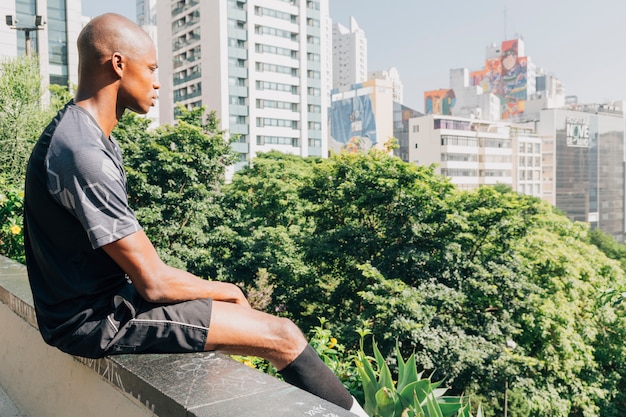
Last September, my friend Julia and I completed a four-day walk on the Tour de Mont Blanc. We had some sore muscles but no major issues. However, our walk the previous year on an earlier part of the route was much more stressful. We only made it to our endpoint by nightfall thanks to the kindness of strangers.
Later, we realized that Julia had been suffering from altitude sickness, also known as Altitude Mountain Sickness (AMS). Determined to have a better experience this year, Julia researched the condition and sought medical help. This preparation paid off, and she was back to her fit self, even outpacing me on the trail. Here’s Julia’s advice on AMS and how to avoid it.
Looking back, it’s clear why Julia was so affected by AMS last year. We arrived in Chamonix at 1100 meters and took a cable car up to 1875 meters at Flegere the next day. We then walked up to 2100 meters on difficult terrain. The path descended to the valley at Tre-le-champs (1400 meters) but then took us up again over the Aiguillette du Possette at 2200 meters. These large altitude variations, combined with strenuous walking, were tough on Julia.
Julia later learned she was suffering from Ataxia, which causes muscle weakness. She described it as feeling like walking on jelly, with her legs threatening to give way at any moment. This was especially frightening when walking downhill with a rucksack. She also felt extreme fatigue, dizziness, and heaviness. At one point, she feared she might faint before reaching a café at the bottom of the valley. The only common symptom of Ataxia she didn’t experience was a headache. While walking together, I knew Julia was struggling but didn’t realize how bad it was. In hindsight, I should have stayed closer to her or offered to carry some of her baggage.
After our trip last year, Julia researched her symptoms online and was convinced she had AMS, which she had also experienced years before in the Canadian Rockies. She sought medical advice from a travel clinic nurse, who provided information about the drug Dimoxyl, which Julia obtained through a private prescription.
Julia also learned that dehydration is a major factor in AMS. She hadn’t always worn a sunhat and was using only one walking pole instead of two. To stay hydrated, she bought a clear plastic water pouch with a tube, allowing her to take regular sips of water while walking. This helped a lot. She also regulated her breathing by taking deep breaths and exhaling fully to avoid a buildup of carbon dioxide.
Another challenge of walking a mountain trail like the Tour de Mont Blanc is the strain on your legs and knees. For the first two years, I had no issues, but this third year, I had problems with an inflamed knee cartilage. My physiotherapist prescribed anti-inflammatory medication, starting with the strongest over-the-counter Ibuprofen in the UK. When that didn’t help, I got a stronger prescription drug. These medications reduced the inflammation and discomfort, but I was still cautious about straining my knee on mountain terrain.
As a precaution, I continued taking Ibuprofen during the walk to reduce inflammation and wore a neoprene knee support, which helped keep my knee warm and supported. Walking poles are essential on the Tour de Mont Blanc, especially if you have knee problems. They provide tremendous support, helping you maintain balance on slippery, muddy, and steep paths, preventing twists and strains. If you have joint issues, seek medical advice, but I recommend keeping some over-the-counter Ibuprofen in your medical kit as it’s both an anti-inflammatory and a painkiller.
Despite our fitness problems, we traveled with a very small medical kit. Mine was in a clear plastic pencil case borrowed from my son. The Tour de Mont Blanc is a popular trail, and while you can reach remote places, there are usually other walkers around, and you’re never more than a day’s walk from the valley where you can get medical attention if needed.
Our medical kit was designed to handle minor ailments and discomforts that could spoil the trip. We carried antiseptic cream and wipes, plasters for blisters, nasal spray for blocked noses, lip sore cream, antibiotic eye ointment, athlete’s foot cream, a general antibiotic, and diarrhea treatment. Since some mountain refuges are basic, with no showers, and you might need to go behind a bush for a call of nature, we had a good supply of wipes to keep clean.
Although parts of the Tour de Mont Blanc are wild and far from civilization, which is part of its charm, you’re never more than a few hours’ walk from a hut, town, or village in the valley where you can get help in a serious medical emergency. The Tour de Mont Blanc is strenuous in parts but manageable if you’re generally healthy and moderately fit.
Make sure you have health insurance that covers mountain walking and evacuation in case of a serious medical emergency. Check your policy’s small print for any exclusions related to altitude, as you’ll be going over 2500 meters on the Tour de Mont Blanc.
If you’re concerned, follow the most popular clockwise route. We went anti-clockwise, against the flow. The clockwise direction is more popular, so you’ll always have a steady flow of walkers who can help you reach the next refuge if needed.
The Tour de Mont Blanc can be challenging, especially if you do the entire 12-day trek in one go. But with awareness of potential health hazards and reasonable precautions, you should have an enjoyable trek, as we did.